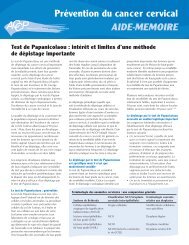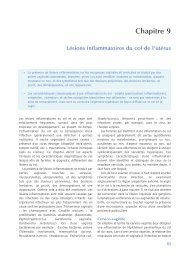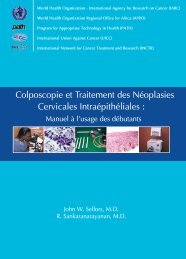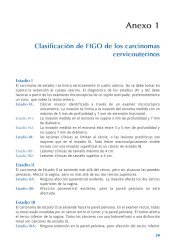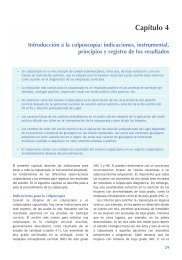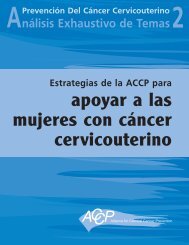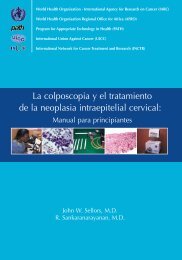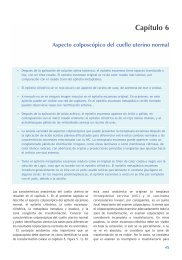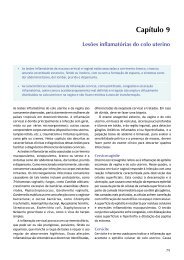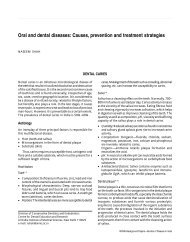Manual for Cytology - IARC Screening Group
Manual for Cytology - IARC Screening Group
Manual for Cytology - IARC Screening Group
You also want an ePaper? Increase the reach of your titles
YUMPU automatically turns print PDFs into web optimized ePapers that Google loves.
C. Special Purpose Fixative<br />
Fixation of <strong>Cytology</strong> Specimens<br />
● Carnoy’s fixative: This is a special purpose fixative <strong>for</strong> haemorrhagic samples. The<br />
acetic acid in the fixative haemolyses the red blood cells. It is an excellent nuclear<br />
fixative as well as preservative <strong>for</strong> glycogen but results in considerable shrinkage of<br />
cells and tends to produce over staining in hematoxylin. Overfixing in Carnoy’s also<br />
results in loss of chromatin material.<br />
Carnoy’s fixative must be prepared fresh when needed and discarded after each use.<br />
It loses its effectiveness on long standing, and chloro<strong>for</strong>m can react with acetic acid to<br />
<strong>for</strong>m hydrochloric acid<br />
● AAF Fixative: This is the ideal fixative used <strong>for</strong> cellblock preparation of fluid specimens<br />
Mailing of unstained smears<br />
Glycerine method <strong>for</strong> mailing slides: Smears are first fixed in 95% ethanol <strong>for</strong> 12<br />
minutes and removed. Two drops of glycerine are placed on smears and covered with a<br />
clean glass slide. This may be wrapped in wax paper and mailed to the laboratory in a<br />
suitable container. Coating fixative such as carbowax fixative and spray coating fixative can<br />
be used primarily to facilitate transport of smears, mailing etc.<br />
Prefixation of cytologic material<br />
Prefixation may preserve some specimens <strong>for</strong> days without deterioration of cells. Some of<br />
the disadvantages of pre-fixation are precipitation/coagulation of proteins, hardening of<br />
cells in spherical shapes and condensation of chromatin. The coagulation of proteins may<br />
interfere with the adherence of cells to glass slides. It also ‘rounds up’ the cells - causes the<br />
cells to gather together into tight clusters making stain absorption and interpretation difficult.<br />
Albuminized slides should be used to prepare smears from prefixed sample. The most<br />
common solutions used <strong>for</strong> this purpose are:<br />
● Ethyl alcohol (50% solution)<br />
● Sacomanno’s fixative (50% alcohol with 2% Carbovax 1540)<br />
● Mucolexx (A commercial mucoliquifiing preservative <strong>for</strong><br />
the collection of mucoid and fluid specimens)<br />
Many other preservatives have been developed <strong>for</strong> use with automated cytology<br />
systems.<br />
Rehydration of Air Dried Smears<br />
Unfixed, air-dried gynaecological smears received from peripheral areas can be used <strong>for</strong><br />
Papanicolaou staining by rehydration method. The simplest rehydration technique is to place<br />
air dried cytological specimens in 50% aqueous solution of glycerine <strong>for</strong> three minutes followed<br />
by two rinses in 95% ethyl alcohol, and then stained by the routine Papanicolaou method.<br />
29



